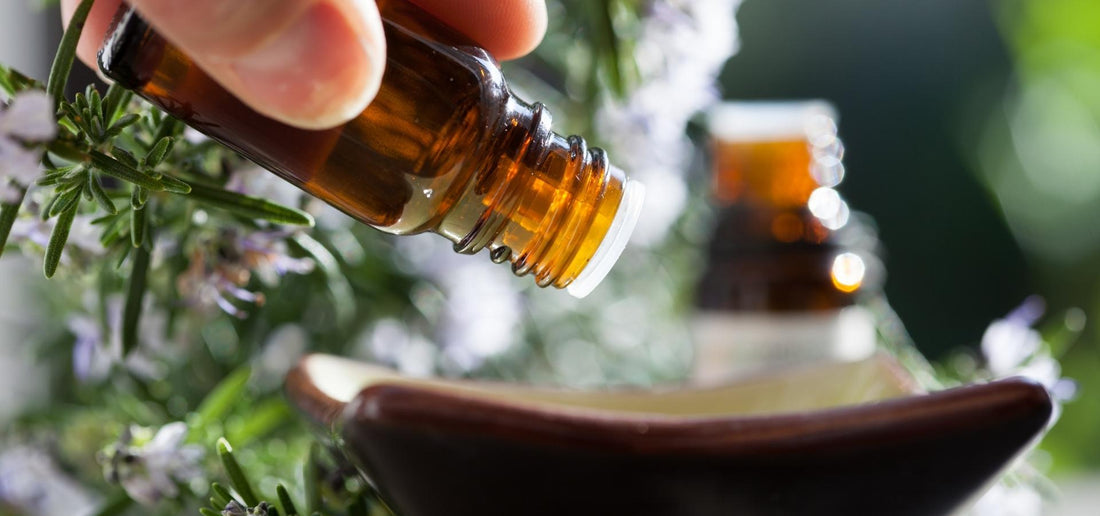Get Started With Essential Oils
As you get started with essential oils keep these things in mind:
- Determine the uses and benefits of the oil you intend to apply.
- Follow any label and packaging instructions.
- If you have specific concerns, consult with a healthcare professional first.
How to Apply Essential Oils
There are three ways to use essential oils:
1. Through smell. We call this “aromatic” use of essential oils. This includes any application method that helps you experience the aroma of the oil. You can use essential oils aromatically by:
- Diffusing in an essential oil diffuser
- Applying a drop to your hands and inhaling
- Wearing as a personal fragrance
2. On your skin. “Topical” application of essential oils allows the oil to absorb into the skin. Some ways to use essential oils on your skin are:
- Massage
- Apply to targeted areas and rub in
- Add to lotions or moisturizers
3. Ingesting, or “internal” use of essential oils allows the oil to be transported throughout your body. Make sure the essential oil is safe for internal use first, and then try one of these methods:
- Add to a glass of water
- Take in a veggie capsule
- Put a drop under your tongue
Essential Oil Safety
Here are a few things you'll want to keep in mind when you are learning how to use essential oils:
Essential Oil Safety Guidelines
- Avoid applying oils to sensitive areas like the nose, ears, eyes, or broken skin. Avoid using “hot oils” on the face.*
- Always read labels and package instructions before using an essential oil for the first time.
- Use dilution to minimize skin sensitivity.
- Be aware of oils with sun sensitivity warnings.
- Practice safe storage—keep oils out of reach of children.
- Always supervise young children when applying essential oils.
- If you have specific health concerns, talk to a healthcare professional before trying essential oils.
*Hot oils or strong oils include Cassia oil, Cinnamon Bark oil, Clove oil, Oregano oil, Thyme oil, and others.
How to Use Essential Oils Aromatically
Aromatic use of essential oils is especially powerful.
The sense of smell is a tool that can elicit powerful physiological, mental, and emotional responses. Essential oils are quickly absorbed by smell receptors, which have a direct link to the limbic system, which is the part of your brain that stores memories and emotions. Some essential oils induce uplifting or invigorating effects, while others are more calming.
Diffusing is one of the simplest ways to use essential oils aromatically. You can use an essential oil diffuser if you’d like but using essential oils aromatically does not require any special diffusing devices. You can achieve the same health benefits by simply placing a few drops of essential oil in the palm of your hand, cupping it around your nose, and breathing deeply.
Other Ways to Use Essential Oils Aromatically:
- Apply oil to a cotton ball and place in the air vents of your vehicle
- Mix oils in a spray bottle with water and mist over furniture, carpet, or linens
- Add oil to a batch of laundry or to dryer sheets
- Use in household surface cleaners
How to Use Essential Oils Topically (on the Skin)
Essential oils easily penetrate the skin for localized benefits, making topical (on the skin) application a great way to experience the benefits of essential oils. This is why doTERRA works to create potent essential oils that are powerful enough to promote healthy-looking skin, yet gentle enough to use on a daily basis.
When used topically, essential oils can improve complexion and skin tone. They can also be used as part of a soothing massage. Before topical application, be sure to follow all label recommendations and dilution instructions.
Beneficial Areas You Can Apply Essential Oils
- Neck
- Forehead and temples (unless the oil is classified as a “hot oil”)
- Chest and abdomen
- Arms, legs, bottoms of feet
Other Ways to Use Essential Oils Topically
- Add a few drops of oil to a warm bath
- Make a hot or cold compress by soaking a cloth in water, adding essential oils, and then applying to the desired area
- Add oil to a lotion or moisturizer and then apply to skin
Sensitive Areas to be Avoided
- Some facial areas, such as the skin around the eyes
- Eyes and inner ears
- Broken, damaged, or otherwise injured skin
How to Use Essential Oils Internally
When ingested, essential oils directly enter the blood stream via the gastrointestinal tract, where they are transported throughout the rest of the body. Essential oils are readily transported to all organs of the body, including the brain.
Follow label recommendations and other professional guidelines for dosage when using essential oils internally.
Effective Methods of Internal Application
- Add essential oils to water, smoothies, milk, tea, or other drinks
- Put a drop under the tongue
- Take in a veggie capsule or add to a small amount of applesauce or yogurt
- Use oils in recipes for cooking or baking to replace fresh or dried herbs and spices (Remember, essential oils are much more potent than dried or fresh herbs and spices, so start with a very small amount. Use a toothpick for particularly potent oils.)

